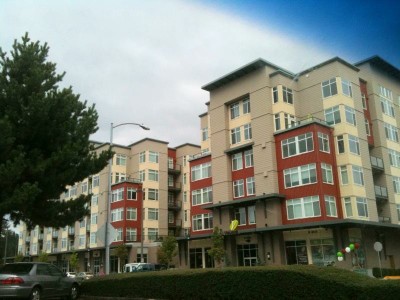 For the last several years something has really gotten under my skin: the way we talk about housing and affordability. I don’t like the way we measure it.
For the last several years something has really gotten under my skin: the way we talk about housing and affordability. I don’t like the way we measure it.
The first time I found myself getting unhappy about the discussion about housing affordability was a few years ago when I watched the debate over legislation to create incentive zoning in Seattle. By using a formula based on Area Median Income and the normative “rule of thumb” for housing costs, the Council decided that a hypothetical worker in Seattle making $45,000 should pay about $1,000 a month for rent. Developers who wanted to build extra housing should have to build more housing at that price.
That just didn’t seem to make sense to me at the time and it still doesn’t. My question is: can’t we find a better way to define affordability? I’m not the only one asking this question. The Center for Neighborhood Technology has developed a new measure and the Urban Land Institute’s Terwilliger Center is trying to do the same thing. There must be better ways to talk about what affordability means in an urban context.
A good definition of affordability matters because so much of the debate around density, sprawl, and growth management centers on the cost of housing. What about the oft repeated argument that housing in dense neighborhoods is too expensive for that hypothetical worker?
This question does make sense. A condo in downtown Portland or Seattle or Vancouver, BC really does cost more per square foot than a house out in the ‘burbs. Here’s what Harvard’s Edward L. Glaeser found in a study several years back before the real estate bubble filled up:
In some of America’s great cities, residential real estate prices have soared over the past twenty years. In Boston and San Francisco, the median home price rose by 153 and 81 percent, respectively, in constant dollars between 1980 and 2000. According to the U.S. Census, the median value of an owner-occupied housing unit in Manhattan rose from $245,633 in 1980 to $377,246 in 2000 (both figures in 2002 dollars), implying an average annual compounded real appreciation rate of 2.2 percent, which is double the national average real appreciation rate on the widely-used Freddie Mac Repeat Sales Price Index.
And a study done by the Canadian Centre for Policy Alternatives found the same thing about Vancouver. On a floor area basis, Housing really does cost more in the dense, compact, urban core we tout as being far more sustainable than sprawl.
With center city housing so expensive, at least relative to suburban, locations, doesn’t it mean that cities have an affordability problem? Not necessarily.
The reason it’s so hard to answer the question is, in part, because we don’t know what it is we’re asking. What does “affordable” really mean? If it’s 30 percent of 80 percent of monthly AMI—the way affordability is typically measured—that’s one thing. But if it’s something else—like whether a family has enough money left over to be self sufficient after paying or housing—it’s something entirely different.
I pay more to live in Seattle’s Capitol Hill neighborhood than I would if I lived in Maple Valley, an outlying suburb 30 miles away from downtown, but I don’t need a car where I live, which means that my cost of living is, in some ways, cheaper. (It also means that my transportation needs don’t rely on the subsidized roads between Seattle and Maple Valley either.) The problem is that our existing measures of affordability make it almost impossible to conduct a truly apples-to-apples comparison between affordability in different locations.
The challenge for advocates of density is to respond more convincingly—with better quantitative arguments—to policy makers who ask “but is it affordable?” Advocates also need a better push back to the argument that some opponents make that density only favors millionaires. I believe that life in compact, transit oriented communities is, in fact, both more affordable and more sustainable than the alternatives, but we’re not quite there yet, at least in terms of our analysis of affordability. Still, we’re headed in the right direction. The sooner we can revise how we measure housing affordability—like the US is trying to do with poverty—we’ll be well on our way to quantitatively expressing the true costs of living in sprawl, and the financial advantages of living in a dense, compact neighborhood.
Photo Credit: Photo of density in Redmond by author

Comments are closed.